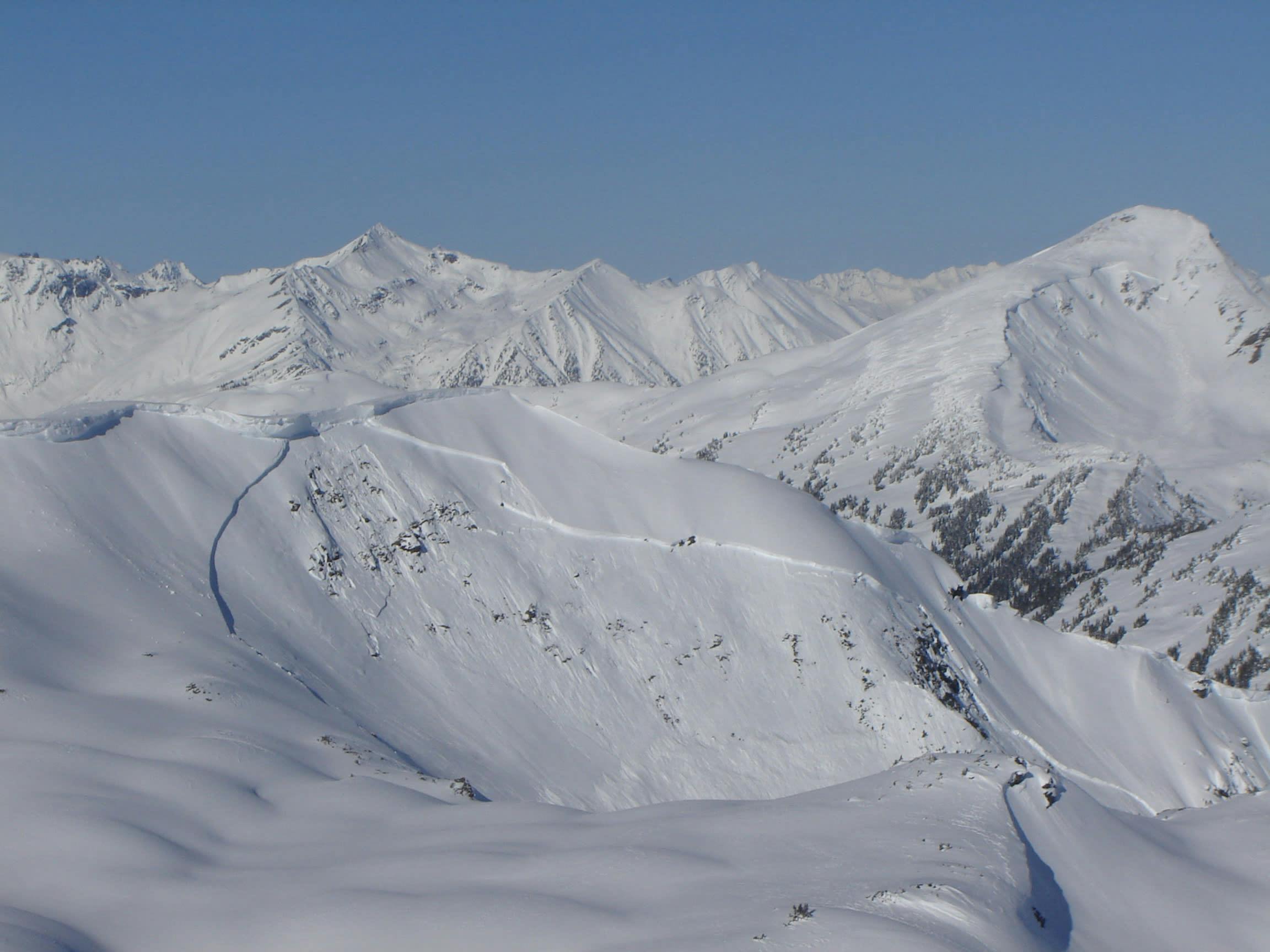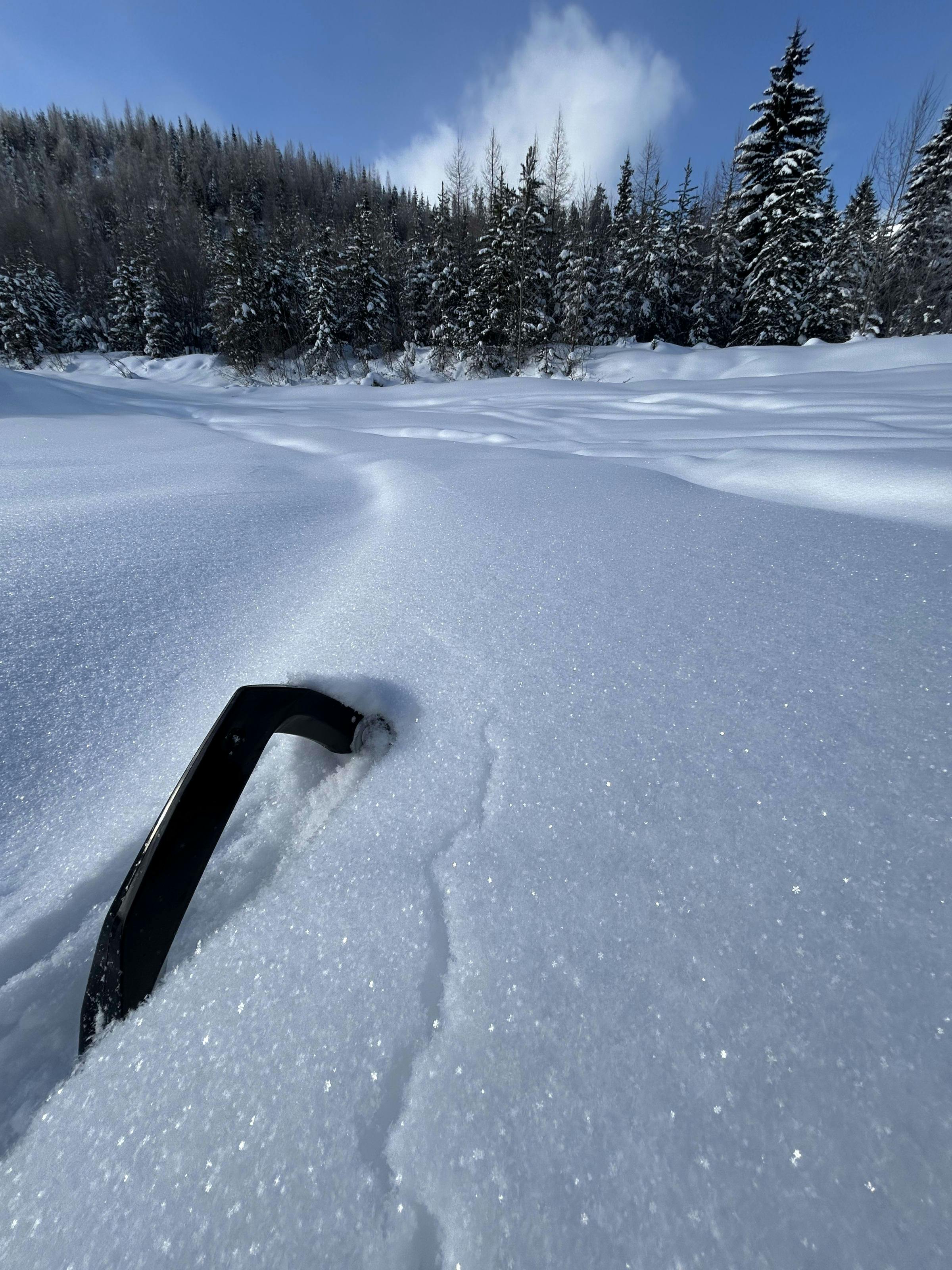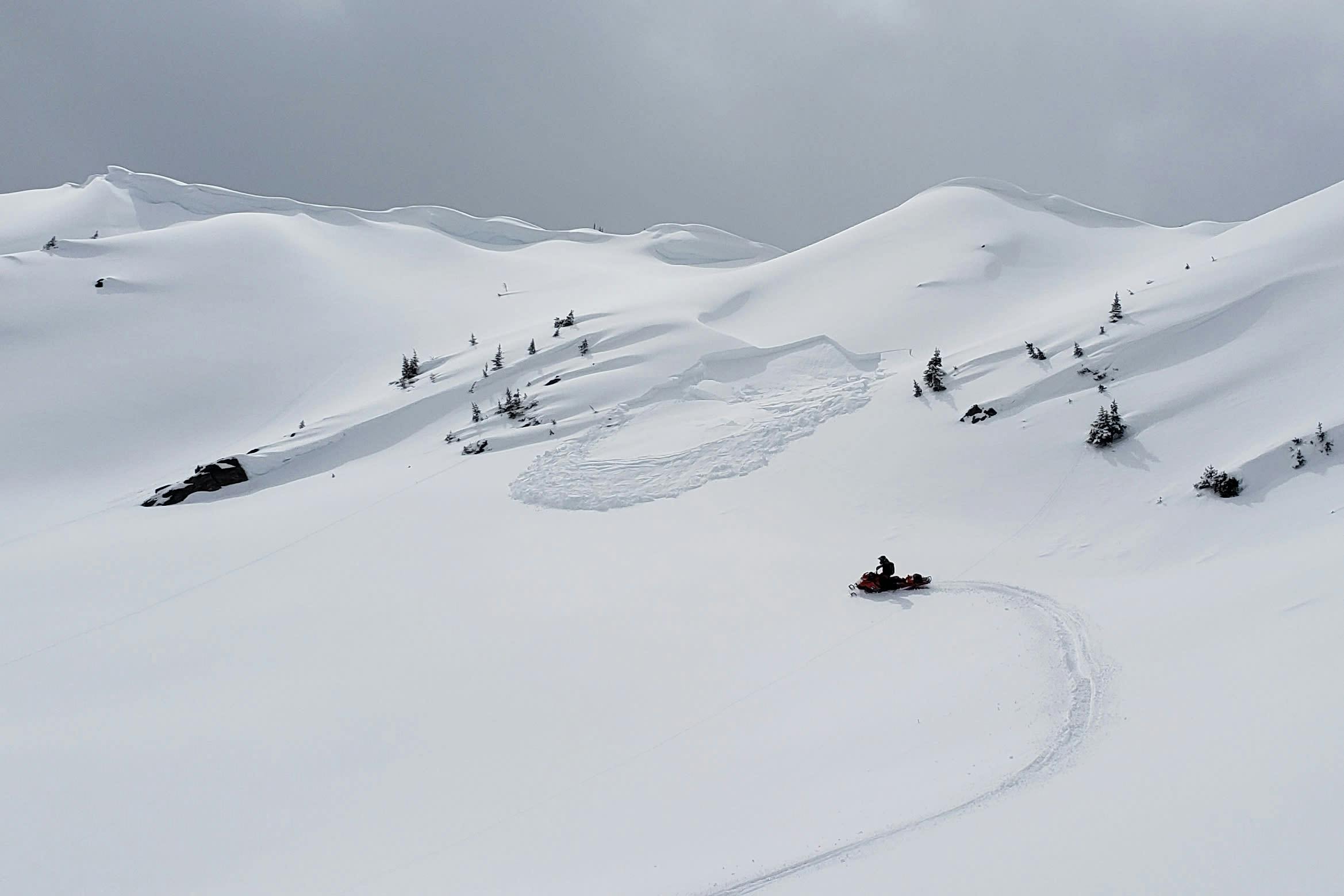- Date
- Friday, February 14, 2025
Light, powdery snow is the stuff most recreationists dream of and light, powdery snow that sticks around for a while is even better! When cold weather preserves these conditions, we can see lower avalanche danger and the potential for a touch of complacency about the risks.
We’re always looking to verify conditions as we move through the mountains, it’s an essential part of avalanche safety. When we have loose surface snow, one of the main things on our radar is identifying where this snow has formed a slab. Once we have a slab formed, the avalanche danger can change dramatically—especially where we have a weak layer beneath the new snow.

A cohesive slab isolated in a snowpit test.
What is a slab?
A slab forms when snow crystals form a stronger bond to each other than they do to the layer underneath, which can cause an unstable snowpack structure. You can think of it like a block sitting over marbles.
A slab can be made of multiple layers that have bonded together, but fails as a cohesive unit on a weak layer. They can range from centimeters to meters deep and the size of the slab determines how much snow is available to move if there is an avalanche. A slab can form in small features, like pockets below a ridgeline, open treeline features, or along road banks. They can also form over large areas, like open slopes or bowls. If a uniform slab is connected through a large piece of terrain, avalanches can propagate widely.

An avalanche caused by a slab that formed over a large uniform area.
Slabs can feel hard or soft depending on grain size, grain type, and the bond between crystals, but the important thing is whether a slab exists or not.
Identifying slabs in the terrain
Visual clues
Sometimes, cracks that propagate through the snowpack are a sign that the surface snow has formed a cohesive unit. Shooting cracks under the weight of a person or machine are a sign of instability in the snowpack. We don’t always get these obvious clues that there is a slab forming though.
Slab avalanches that have occurred in the last 48 hours are a clear sign slab properties exist in the snowpack. Terrain features on the same aspect and elevation are likely have the same slab properties.
Wind transport at ridgeline and wind drifted snow is another sign that slabs may be forming in the surface layer snow in wind affected areas.

A crack propagating under the weight of a machine.
Tactile clues
Snow that is forming a slab can physically feel different. It can be denser and firmer. If the snow feels stiffer underfoot or you can feel resistance if you put your pole or hand through the layer and lift, there may be a slab.
Whumpfing is the sound made as a weak layer collapses. If there is a slab in the snow above the weak layer when that happens, and the slope angle is steep enough for the snow to slide, there will be an avalanche. We can also get whumpfs as we’re moving on mellow terrain too and they’re always a clear sign that the snowpack is unstable.

Cracks across a slab on a slope.
Snowpack tests
Digging a snow pit and completing compression tests or doing a hand shear test can help you identify slab properties. If a cohesive layer of snow breaks off of your column during a test, it's one sign that a slab is present.
What conditions create a slab?
Snowfall More than 30 cm of snowfall or heavy snowfall over a 24-hour period.
Settlement Settlement refers to the process that consolidates snow. It occurs as a result of snow metamorphism combined with gravity’s compression of grains in the snowpack.
Wind As wind redistributes snow, the snow crystals are broken into small particles and become packed together on lee slopes, creating harder density snow.
Temperature Warm temperatures promote snow grains to round and bond. This settles snow into a cohesive slab. Cold temperatures promote faceting and don’t cause cohesion in the snow.
Solar Input The sun also causes warming and settling, which can encourage slabs to form.
Summary
When there is potential for slab avalanches, we need to make sure our backcountry travel plans are adapted for this risk. Sometimes there are obvious clues that a slab has formed, but other times being caught in an avalanche is the first obvious sign of instability that you get.
If you are uncertain about the possibility of slab avalanches, terrain choice is your best defense. Ride as if a slab is present until you have enough information to confidently rule it out. This means sticking to low-angled terrain and avoiding convex rolls, as well as travelling on high points, wide ridgetops, and benches to help reduce the chances of triggering a slab.

A snowmobile remote triggers a slab formed in a small pocket. Photo: Frozen Pirate.